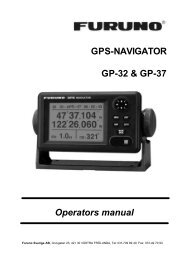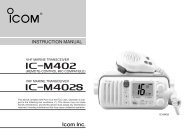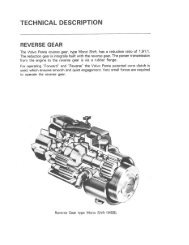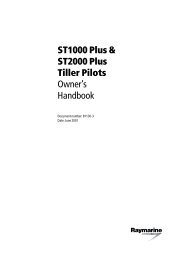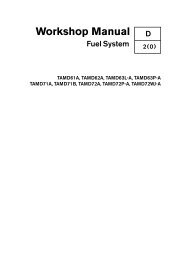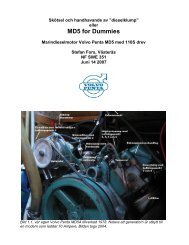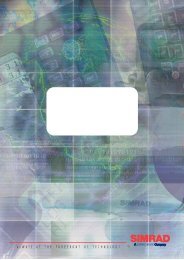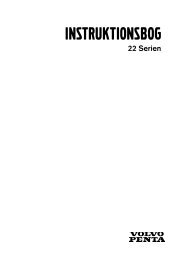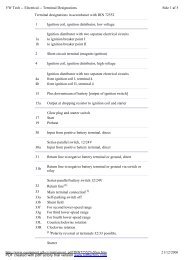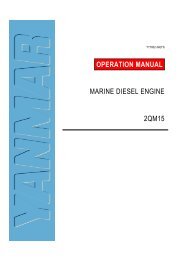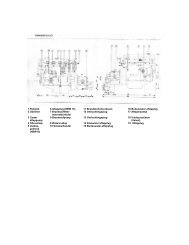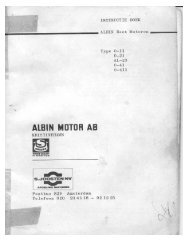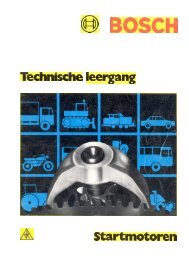You also want an ePaper? Increase the reach of your titles
YUMPU automatically turns print PDFs into web optimized ePapers that Google loves.
Chapter Three<br />
Operation, Lubrication, Maintenance<br />
and Tune-up<br />
A diesel engine must have clean air, fuel, and oil. Regular<br />
preventive maintenance and proper lubrication will<br />
pay dividends in longer engine and transmission life, as<br />
well as safer boat operation.<br />
The lubrication and maintenance intervals provided in<br />
Table 1 are those recommended for normal operation. If<br />
the boat is used under continuous heavy duty or other severe<br />
operating conditions, including infrequent use, perform<br />
maintenance and lubrication more frequently.<br />
Keep the engine and accessory units clean and free of<br />
dirt, grime and grease buildup. It is much easier and safer<br />
to perform service on a clean engine. It is also much easier<br />
to pinpoint any leaks.<br />
Tables 1-6 are located at the end of this chapter.<br />
NOTE<br />
Except where specified, F and D series engines<br />
are included when a basic model number<br />
is specified. For example, ifmodel 3GM<br />
is called out in a procedure, the procedure<br />
also applies to 3GMD and 3GMF<br />
FUEL REQUIREMENTS<br />
The recommended fuel is number 2 (2-D) diesel fuel.<br />
Be sure the fuel is clean and free of water.<br />
NOTE<br />
Poor fuel is one of the leading causes of<br />
rough engine operation orfailure to start.<br />
Dirty fuel or water in the fuel can cause expensive damage<br />
to the fuel injection pump and fuel injectors. Refer to<br />
Chapter Seven.<br />
PREOPERATIONAL CHECKS<br />
Before starting the engine for the first time each day,<br />
perform the following checks:<br />
1. Remove the engine compartment cover or hatch and<br />
check for the presence of fuel fumes. If the boat is<br />
equipped with a bilge blower, turn it on for a few minutes.<br />
If the smell of strong fumes is present, determine the<br />
source and correct the problem before proceeding.<br />
WARNING<br />
Always have a Coast Guard-approved fire<br />
extinguisher close when working around the<br />
engine.<br />
2. Check the engine oil level as described in this chapter.<br />
Add oil if the level is low.<br />
3. Check the electrolyte level in each battery cell as described<br />
in this chapter. Add distilled water if necessary.




